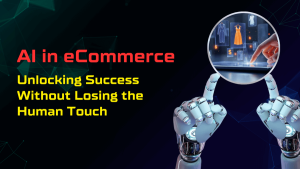What is Chainlink?

Chainlink has arguably become one of the most used projects in the crypto world. It is a decentralized oracle service with the potential of helping to provide external, real-world data to Ethereum smart contracts. That means Chainlink comes as an ultimate solution helping to connect blockchains to the real world.
If you are new to the cryptocurrency world and wondering what Chainlink is, here is a guide to help. In this guide, we will be showing you everything you need to know about the innovative solution to the problem that has plagued blockchain for years. Asking what is Chainlink? Keep reading!
Chainlink Addressing a Major Problem
Smart contracts automate a set agreement on the blockchain. They evaluate information, and if certain conditions are met, the smart contracts are executed. But there is still a problem, and that problem has plagued blockchain smart contracts for years.
There is no reliable way to access external data. Smart contracts are faced with the major problem of being unable to connect on-chain data with off-chain data. But by offering a decentralized oracle, Chainlink provides an innovative way to bring a solution to the challenges.
The oracle is a piece of software that helps translate off-chain data into a language that smart contracts can easily understand and interpret. So, let’s see what is really unique about Chainlink and how it works.
What is Chainlink?
Chainlink is a network of oracles on the blockchain that basically allows easy connection between smart contracts and the real world. Chainlink makes it easy for smart contracts to connect to data outside the chain. These may include internal systems, APIs, and other types of external data providers.
Chainlink has a token called LINK. This is an ERC-20 token that is used for paying for the operations of oracles on the Chainlink network. So, what makes Chainlink decentralized?
Well, a centralized oracle is a single provider of information outside of a smart contract. Because a centralized oracle is the only source of information, this could be a big problem, especially when the oracle provided incorrect or false information. That means all systems that rely on it would fail – a situation known as “the oracle problem”. That is exactly the problem Chainlink sets out to solve.
So, How Does Chainlink Work?
In order to make sure the data provided to smart contracts are as reliable and secure as possible, Chainlink uses a network of nodes. These nodes are what get the job done for Chainlink.
For instance, let’s say a smart contract needs external data and therefore, submits a request to get it. The Chainlink protocol identifies the request and registers it. It then transfers it to the nodes of the Chainlink network to get “bids” from them concerning the registered request.
Chainlink now uses its powerful internal reputation system to validate the data received from multiple sources. This makes it sure which sources are reliable and which ones are not. This greatly increases the accuracy of the results obtained from the nodes and hence protects the smart contracts from any form of attack.
So, how does LINK comes into play in all these? Well, the smart contracts that sent the request for real-world data will pay the Chainlink node operators with LINK for their service. The prices are established by the node operators based on the market condition of the data the smart contract is requesting.
In order to ensure their long-term commitment to the project, node operators oftentimes also stake their LINK. Just like we see in some other cryptocurrencies like Bitcoin, node operators are also rewarded for being as honest as possible with their operations, rather than being malicious.
Chainlink and DeFi
With decentralized finance (DeFi) growing in popularity by the day, there has also been an increase in people’s interest in high-quality oracle services. Remember that most of these DeFi projects employ smart contracts in one way or the other, and also require external data for optimum functioning.
With centralized oracle services, DeFi projects have an increased risk of falling victim to different attacks, including flash loan attacks due to manipulation of the oracle. There have been many incidents like this in the past, and if centralized oracles still remain the norm, they will likely going to continue.
Although Chainlink can also be vulnerable to some new types of attacks, it is definitely going to reduce the rate of attacks on smart contracts compared to centralized oracles. Many projects today, including Aave, Synthetix, and many more rely on Chainlink technology for optimum performance.
LINK Supply and Insurance
LINK has a maximum supply of 1 billion tokens. 35% of the tokens were already sold during the ICO in 2017. About 300 million are in the hands of the company that founded the project. Also, mining does not have a mining or staking process like some other cryptocurrencies like BTC or ETH. And so, there is likely no tendency of having its supply increased.
How Do You Store LINK?
Currently, the token does not have its own blockchain. Since it exists as a token on the Ethereum blockchain, it follows the ERC-667 standard. That way, LINK can be stored in any compatible wallet like MetaMask or Trust Wallet.
What is the Use Case of LINK; what is It Used For?
Remember that we said the node operators are responsible for helping the nodes get reliable external data for smart contracts. These node operators are paid with the LINK tokens. This approach encourages the node operators to remain honest with their operations, hence helping the node operators to keep accumulating LINK.
And when a node operator has a large pool of LINK, they will have a better chance of accessing ever-larger data contracts. On the other hand, if a node operator decides to go dubious and provided false or incorrect data, its LINK tokens will be taken away because of that.
Final Note
Chainlink has, in many ways, proved to be an essential element to DeFi and the entire crypto community. With the potential to supply smart contracts with trusted external data, it has proven to be one of the pillars for a healthy on-chain product ecosystem.
Article provided by Slidebusiness.com. For more interesting article you ca checkout this site.






